What are the 5 most important things for survival?
The Five basic needs of almost all survival situation are shelter, water, fire , food and first :-) Aid. The following team helps meet the needs of these four priorities:. The order of importance of the following essential elements is determined by the needs of a given situation:. More than 70 percent of human weight is water.
Hydratation
Anything that disrupts this balance can :-) cause serious dehydration. Weather conditions in nature can cause fatal dehydration very quickly. Therefore, you need a way to compensate for any water loss from your body. Food provides the human body with the energy to perform optimally both physically and mentally.
Oxygen is one of the most essential human needs. Our bodies need a constant supply to function properly. On a normal day :-), the body loses water from natural processes such as sweating, urinating, breathing, defecating, and other bodily functions. This water is usually restored through food and drink consumed throughout the day.
However, if this replenishment is interrupted, it will inevitably result in dehydration. The dehydration process begins when the body is unable to maintain hydration balance. A 2.5% loss in the volume of water in a person can lead to a 25% :-) reduction in blood volume. In extreme cases, this means that the blood will thicken and the heart will have to work harder to pump nutrients throughout the body.
People forget to drink water throughout the day for many reasons, however, it's important to point out these reasons and reflect on how you can make the appropriate changes. If you're too busy, setting reminders on your phone can simplify :-) the process. If you're constantly working on the go, you can carry a water bottle with you throughout the day to make sure you have access to water. If you don't like the taste of your water, try a Santevia alkaline water filter for excellent fresh tasting water.
The MINA alkaline pitcher :-) is the perfect hydration solution for everyday use at home. Products like Power Stick and Recovery Stick offer fast filtration and hydration for busy lifestyles. Our Tritan water bottle is a great choice to combine with a recovery or energy bar and is slim enough to fit effortlessly into most bags. Surprisingly, the body can survive quite a long time without food.
This is mainly due to the way the body adjusts metabolism and energy consumption. In fact, many social and religious groups frequently perform short fasts, such as hunger strikes for social causes and fasting for religious reasons. Your body will continue to function :-) normally for up to eight hours without eating. In normal situations, the human body converts food into glucose, which then feeds the body.
Food
There are guidelines for the amount of calories you need per day for optimal performance. You may need even more food in nature, but here, quality is better than quantity. The best examples are wheatgrass, maca powder and spirulina. Also, make sure food is ready to eat or easy to prepare.
The food should be sufficient in quantity to feed him for the entire period that he will be in the :-) open air. In addition to the food you pack, you need basic survival skills on how to get food from the jungle. Prepare a descriptive list of all wild edible foods in advance. Any knife can be a lifesaver in the forest.
However, a survival knife is a structurally specialized knife for excellent performance in survival situations. The knife helps you clear roads, build shelter, prepare food and hunt for food. In additiSurvival Knifeon, it is a formidable weapon of self-defense if you know how to handle it. Also use as an impromptu first aid component.
Look for a fixed blade survival knife. Its lack of moving mechanical parts gives it :-) the durability and strength needed to be able to cut branches and twigs from larger trees. The knife must be sharp to make your work easier. Suffering an injury in a survival situation is something to be well prepared for.
First Aid Kit
You may not be able to access emergency medical equipment on time due to the remoteness of nature. A first aid kit is vital in this case. It can help stop worsening bleeding from minor injuries, mobilize injured limbs, :-) and even cover wounds to prevent infections. You don't need to opt for the huge, fully equipped first aid kits.
Survivors can benefit from smaller versions. You can even reduce more weight from the kit by packing only the essentials, such as latex gloves, gauze, cotton, bandages, over-the-counter pain relievers and alcohol-based antibiotics and :-) cleaning wipes. Mobile phones are often useless in emergency situations. Therefore, you must have a reliable way of communicating with the civilized world if you need help.
Fire Starting
A signaling device is crucial in nature. Emergency personnel, bystanders, or even a passing plane can easily recognize a flash from a signal mirror or the sound of a whistle. Make sure you know how to send a signal for a faster response :-) . While you can start a fire with the rudimentary methods of a hand drill or plow, it's a daunting task and the chances of success are limited.
Don't risk it, take 3 robust redundant fire lighting tools with you. Matches should be transported in an impermeable container with an O-ring seal. A striker is an excellent second item, wear it tied to a string around your neck. A lighter is an excellent third item to carry.
Always supplement your 3 fire lighting tools with tinder and some fire starter aids and a candle. Everyone in nature should carry a personal first aid kit at all times. It is a fundamental element that should not be left at home or in the car. Always :-) carry enough pressure dressing with you to stop bleeding from a wound caused by the largest weapon you carry.
A lighter or matchbox gives you the safest way to start a fire with a single stroke. There are now waterproof matches that allow you to start a fire even in damp conditions. You can't underestimate the importance of rope or rope in a survival situation. It's a multi-purpose item that can significantly increase your chances of doing it in nature.
Aim for the 550 parachute rope, commonly known as a parachute rope. It is a rugged, resistant, lightweight and portable product. The rope will allow you to build an emergency shelter using a tarp or a large :-) garbage bag. In addition, it will help you hang or lift food out of reach of wild animals.
The ability to stretch when wet is one of the most incredible features that make the parachute cord special for emergencies. Hopefully, this list of 10 things you need to survive in the desert is all-encompassing. This doesn't mean you don't need other items. Here are the basics you need to make sure your bag is part of your outdoor readiness.
But, the list isn't complete without mentioning your mental faculties and a trustworthy friend. Only a trusted friend can help you if the situation gets serious. It is also necessary to be imaginative, reflective and creative to invent new ways of survival in different emergencies. After thinking about this question for a while, I think there are 4 basic things you need to survive in almost any situation in nature.
In order of importance, they are water, food, shelter and fire. Depending on the situation, you may also need some additional elements that we will cover in this blog post. A shelter can be anything from a 4-season tent to a simple tarp or a large garbage bag. Finding a suitable shelter is crucial to surviving in the wild due to the fact that you share the environment with potential enemies (animals and insects).
Avoid going overboard while setting up a shelter so you don't waste important :-) energy that could be spent on more important things, such as finding food or starting a fire. If you need to go to the bathroom, you should dig a hole or go far downstream from your shelter. To avoid most of these uncomfortable situations, your survival kit should include soap, toilet paper, body cleansing wipes, and a toothbrush. No matter how impromptu your trip to nature, never miss including a first aid kit in your survival kit.
Even if you're familiar with the terrain and have been there countless times, you'll never know when you're going to need something from your first aid kit. It's better to have it and not use it than to need it and not have it. Besides, emergencies don't give us any warning. A general first aid kit will do, but it's safer to supplement it with items that benefit you for your specific situation and location.
All kits should be stored specifically for nature trips, with :-) the idea that you can be stranded in nature for an extended period of time. Choose the equipment you take wisely, take a first aid course in the desert before you leave, and consult a doctor about any medical problems or concerns before packing your kit or leaving for any nature trip. A quality, liquid-filled observation compass is essential as a navigational aid. I recommend a genuine Silva Expedition 15TDCL 360, produced in Sweden by Silva AG (the real Silva company), manufacturers of the best compasses in the world.
These compasses must be purchased in Europe. Personally, I bought two recently in the UK and it was well worth the trouble. If you can't get one, the second closest is a SUUNTO MC-2, which is available nationwide. Carry two sections of more than 3 m of good quality nylon rope or a small diameter climbing accessory rope with you.
Each section can be up to 15 m if possible. The lightweight cable is OK, :-) but the quality of the cable makes a big difference. Don't buy cheap, thin, or weak cables. Backing up your cable with 3m of adhesive tape and 1.5m of lightweight cable.
Remember that the adhesive tape can be wound on your knife sheath and the waterproof match container for easy storage and quick retrieval. Always carry a high-quality signal mirror or glass heliograph with you. Glass mirrors always perform better than the readily available plastic alternative. They may seem to work, but practice with both and you'll quickly see that glass mirrors are the only option.
I recommend placing it with your :-) personal first aid kit to protect it from damage. However, it is essential to consider not only the presence of these five factors, but also their quality. If you want your body to survive and thrive, it's essential that you feed it with healthy food, adequate sleep, plenty of water, clean air, and adequate shelter. Although the air in the Earth's atmosphere is mainly composed of nitrogen gas, the element that is fundamental to human survival is oxygen.
Unfortunately, the reality is that nutritious and fresh food is considered a luxury for many in North America. The financial and additional time burden of consuming fruits and vegetables outweighs its benefits for many. Similarly, consuming mineralized alkaline water can hydrate your body and provide you with the necessary supplements. While it's important to see a doctor before making drastic changes to your diet, for most people, an improvement in the quality of the food and water they consume can make a positive difference in their lives.
Food, such as water, has a value on the pH scale. Therefore, the foods one eats can be considered acidic or alkaline. Choosing foods that are mainly alkaline rather than acidic helps keep our body in an optimal and balanced state. While this extra detail may :-) seem overwhelming at first, it's actually quite easy to consume mostly alkaline foods.
Most foods that are perceived as “unhealthy” are, in fact, acidic on the scale. Too much acidity in the body can lead to illness and increase the likelihood of chronic diseases such as heart disease, diabetes, and cancer. On the other hand, fresh fruits and vegetables such as broccoli and kale are alkaline foods. Proteins such as meat, poultry, and fish are considered acidic on the scale.
This doesn't mean that one should eliminate them completely, however, you need to be aware of :-) the balance of alkaline to acidic foods if you want to help your body dampen acidity and achieve optimal health. Shelter and proper clothing are a means of protecting your body and keeping it at a constant temperature. The biggest concern with being exposed to the elements is water loss. Cold temperatures and wind can remove valuable moisture as quickly as high temperatures can cause sweat-related losses.
Sleep deprivation has long been underestimated as a necessity to survive. However, a serious lack of sleep can be detrimental to your health and life. Problems can range from a drop in body temperature to cognitive impairment and hallucinations. Although the mechanisms of sleep are not well understood, the side effects of lack of sleep are.
Headaches can start as soon as 24 hours after not sleeping. At this point, driving becomes very dangerous. After 96 hours without sleep, cognition is markedly affected. After six days without sleep, hallucinations begin, :-) you can't concentrate or perform tasks.
This lack of clear thinking can be life-threatening. While most Americans don't experience extreme sleep deprivation on a regular basis, many don't get enough sleep every night. The amount of sleep required varies from person to person, it's important to check how much sleep is optimal for your body. The amount of sleep you need depends on your age and activity level, and is likely to vary throughout a person's life.
For many, it may be helpful to go to sleep early and get up earlier, while others prefer to sleep. Sometimes sleeping longer isn't necessarily a good thing. In fact, sleeping too much can cause its own set of problems and, in some circumstances, point to some pre-existing problems. Factors that could cause hypersomnia include obesity, diabetes, headaches, depression and heart disease.
Factors that can affect the quality of your sleep are also worth considering. Factors such as :-) pillows, mattress, room humidity and the amount of light that filters through windows can influence the body's adequate rest during the night. Try different options to assess which one is best for you and your lifestyle. This body is the only one obtained, and the importance of air, food, water, shelter and sleep cannot be overstated.
Remember, it's not just about survival; to thrive, be open to improving and changing any of these factors in your environment. At Santevia Water Systems we have a range of high quality alkaline filtration systems for the home. We are :-) market leaders in alkaline water filtration products. Explore our product line and see if they might be right for you or someone in your family.
By purchasing our gravity water system or the MINA alkaline jug, Santevia donates 100 days of clean drinking water to Ugandans living in water poverty. We want you to be happy with your new water filter. If you are not, we will return it to you without asking questions. NAVIGATION — Map, Compass and GPS.
When planning your route before your trip and helping to orient yourself in your environment during your activity. Know how to use a topographic or relief map and your compass or GPS unit before you :-) go out. SUN PROTECTION: sunglasses, sunscreen and hat. Sunscreen is necessary to protect the skin and eyes from the strong UV rays responsible for sunburn and skin cancer.
Wear sunglasses, apply sunscreen and wear a hat. Protective clothing, such as pants and long-sleeved shirts, can also help minimize sun exposure. There are other things you could add to this list such as sex, emotional connection, sense of belonging, etc. The difference :-)is that, although sex is necessary for the species to survive, an individual can live without it.
Emotional connection and sense of belonging are group needs, not individual survival needs. The truth :-) is that there are only five basic needs; clean air, water, nutrients, shelter and sleep. . .
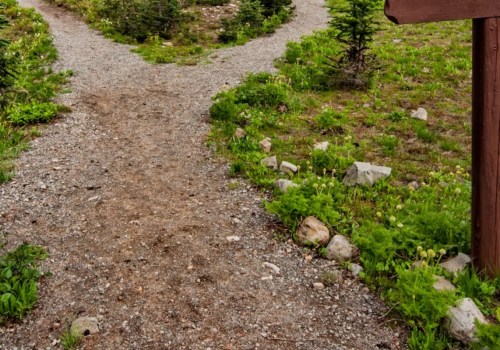
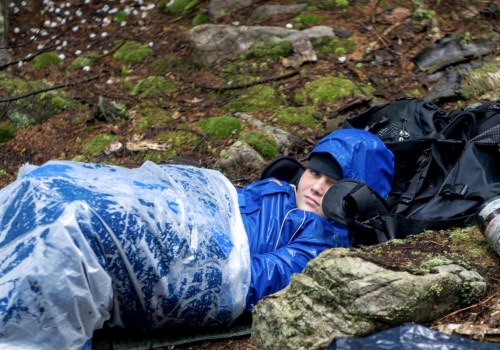
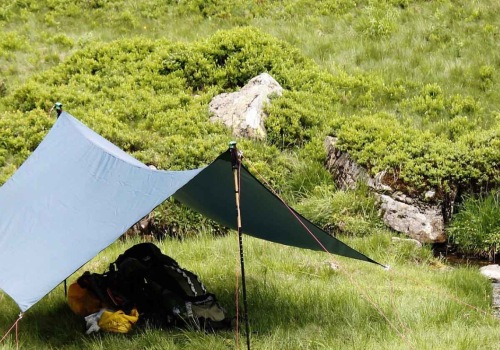
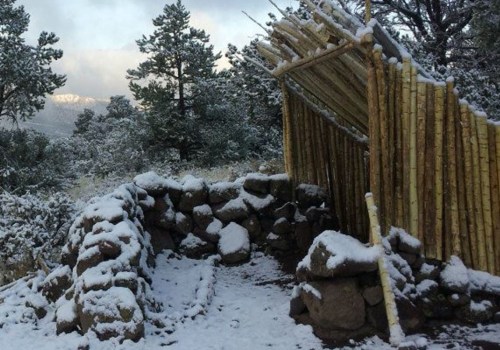
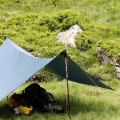
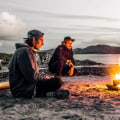
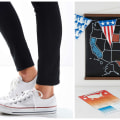
Leave Reply